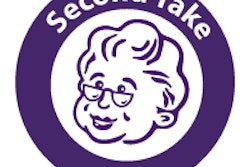Dear CT Insider,
The quest to slash CT radiation dose seems to have progressed to something more akin to blood sport than dry scientific pursuit -- well, at least at the RSNA 2013 meeting earlier this month, where researchers gathered to show off techniques designed to deliver the biggest bang for the photon.
One noteworthy entry came from Massachusetts General Hospital in Boston, for example. Researchers used a technique called sparse data sampling and iterative reconstruction to acquire diagnostic-quality thoracic scans at 0.25 mSv.
The resulting images were superior even to standard-dose filtered back projection reconstructions. You can learn more about the technique in this issue's Insider Exclusive, brought to you before other AuntMinnie.com members can access it.
Researchers from South Korea also scored some low-dose points at RSNA 2013. The group used 80-kVp acquisitions and iterative reconstruction to deliver CT colonography doses at 0.2 mSv -- at least in a phantom. Find out how they did it here.
When you're scanning kids, the use of wide-area-detector CT is another way to lower dose, at least for the smallest children most in need of protection, according to another study presented at RSNA. Wide-area-detector CT is also a great choice for assessing stent patency, even in stents smaller than 3 mm, researchers reported.
In any case, CT radiation doses continue to fall across the board; for some applications such as coronary CT angiography, dose reductions in recent years have been exponential. As a result, for most CT studies, the risk of developing a malignancy years down the road from a scan is infinitesimally small.
Given all that, do radiologists still need to advise patients of the potential risk -- and get them to sign waivers acknowledging that they understand it? Or is that information too complex and too fraught for most patients needing medical care? Does the fact that the benefits of nearly all diagnostic exams far outweigh any risk of future malignancy make a difference? What about patients who might skip a medically necessary scan? Find out more in an excellent point and counterpoint in our Second Take series on this timely topic.
Facial transplants have been a hot topic this year as well, and it turns out that low-dose CT and 3D reconstructions are critical for planning and performing the complex procedures safely. Click here to learn more.
In all, 2013 has been a banner year for noninvasive evaluation of stenosis severity in the coronary arteries. A recent study showed high accuracy for a combined CT angiography and CT perfusion technique. A few weeks earlier, researchers reported the predictive power of fractional flow reserve CT for accomplishing the same task.
Which technique will prevail? Only time and more studies will tell. In the meantime, we invite you to scroll through the links below in the CT Digital Community for still more cutting-edge news in radiology's rock-star modality.
Wishing you happy holidays and a healthy new year.




















